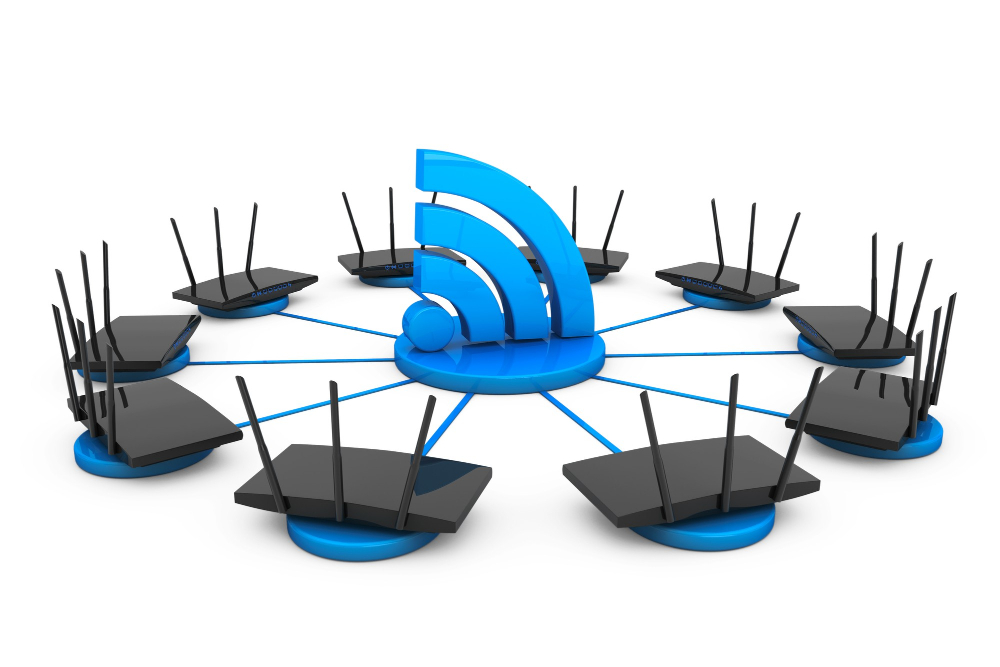In today’s digital age, slow Wi-Fi can be a major frustration, interrupting work, streaming, gaming, or other online activities. There are numerous reasons why your Wi-Fi might be performing poorly, ranging from hardware issues to network congestion. This guide explores the top causes of slow Wi-Fi and provides actionable solutions to help you restore blazing-fast internet speeds.
Common Causes of Slow Wi-Fi
1. Router Placement
Your router’s location can greatly impact Wi-Fi performance.
- Problem: Signals can weaken if the router is placed far from devices, obstructed by walls, or surrounded by electronic devices.
- Solution: Place your router in a central, elevated location, away from walls, furniture, and appliances like microwaves or cordless phones.
2. Network Congestion
Too many users or devices on the same network can cause congestion.
- Problem: During peak usage times, multiple users streaming, downloading, or gaming can overload the network.
- Solution:
- Disconnect unnecessary devices.
- Use Quality of Service (QoS) settings to prioritize bandwidth for critical devices or activities.
3. Outdated Router or Modem
Using old hardware can limit internet speeds.
- Problem: Older routers may not support higher internet speeds or modern standards like Wi-Fi 5 or Wi-Fi 6.
- Solution:
- Upgrade to a router that supports the latest Wi-Fi standards.
- Look for dual-band or tri-band routers for better performance.
4. Signal Interference
Wi-Fi signals can be disrupted by electronic devices and neighboring networks.
- Problem: Devices like Bluetooth gadgets, baby monitors, and microwaves can interfere with your signal.
- Solution:
- Change your router’s channel in the settings to avoid interference.
- Switch to the 5 GHz band for less interference if your router supports it.
5. ISP-Related Issues
Sometimes, the problem lies with your Internet Service Provider (ISP).
- Problem: Slow speeds due to network outages, maintenance, or throttling.
- Solution:
- Run a speed test to compare your actual speed with your subscribed plan.
- Contact your ISP to report issues or inquire about upgrades.
6. Bandwidth-Hogging Applications
Applications that consume a lot of bandwidth can slow down your internet.
- Problem: Activities like large downloads, online gaming, or video conferencing consume significant bandwidth.
- Solution:
- Pause or limit bandwidth-intensive activities during peak times.
- Schedule large downloads for off-peak hours.
7. Outdated Device Software or Drivers
Your device’s network performance can be impacted by outdated software.
- Problem: Bugs or compatibility issues can reduce Wi-Fi performance.
- Solution:
- Regularly update your device’s operating system and network drivers.
- Check for firmware updates on your router.
8. Weak Signal Strength
Devices far from the router often experience slower speeds.
- Problem: Physical distance or obstacles like walls can weaken signals.
- Solution:
- Use Wi-Fi extenders or mesh Wi-Fi systems to improve coverage.
- Ensure devices are within the router’s range.
Step-by-Step Fixes for Slow Wi-Fi
1. Restart Your Devices and Router
A simple restart often resolves many connectivity issues.
- Turn off your router and wait for 30 seconds before turning it back on.
- Restart the devices experiencing slow speeds.
2. Optimize Router Settings
Tweaking your router’s settings can improve performance.
- Enable QoS settings to prioritize important activities.
- Change the channel or frequency band (2.4 GHz or 5 GHz) to avoid interference.
3. Secure Your Network
An unsecured network can be hijacked by unauthorized users.
- Use a strong password for your Wi-Fi.
- Enable WPA3 encryption for better security.
4. Use a Wired Connection
For tasks requiring stable and fast speeds, use an Ethernet cable.
- Wired connections are faster and more reliable than Wi-Fi for devices like desktops and gaming consoles.
5. Upgrade Your Internet Plan
If your household’s internet demands have grown, your current plan might not suffice.
- Contact your ISP to explore higher-speed plans.
- Check for data caps that might throttle your speeds after reaching a limit.
6. Invest in Better Hardware
Upgrading your equipment can make a significant difference.
- Replace outdated routers or modems with models that support modern Wi-Fi standards.
- Consider mesh Wi-Fi systems for larger homes with dead zones.
7. Use a Wi-Fi Analyzer Tool
Analyze your network for weak spots and optimize accordingly.
- Tools like NetSpot or Wi-Fi Analyzer can help identify issues like signal interference or dead zones.
Preventing Slow Wi-Fi in the Future
1. Perform Regular Maintenance
- Reboot your router periodically to clear temporary issues.
- Dust and clean your equipment to prevent overheating.
2. Monitor Network Usage
- Use router settings or apps to track connected devices.
- Disconnect devices not actively using the internet.
3. Upgrade Regularly
- Ensure your router and modem stay up-to-date with the latest technology.
- Replace hardware every 4-5 years to keep pace with advancements.
When to Call a Professional
If your Wi-Fi issues persist despite following these steps, it might be time to call in an expert. Professional technicians can:
- Diagnose complex network issues.
- Provide advice on hardware upgrades.
- Ensure optimal setup and configuration.
Conclusion
Slow Wi-Fi can be a major inconvenience, but most issues can be resolved with a bit of troubleshooting. By identifying the cause and following these solutions, you can enhance your internet experience and enjoy faster, more reliable connectivity. Remember, regular maintenance and occasional upgrades are key to keeping your network running smoothly.







